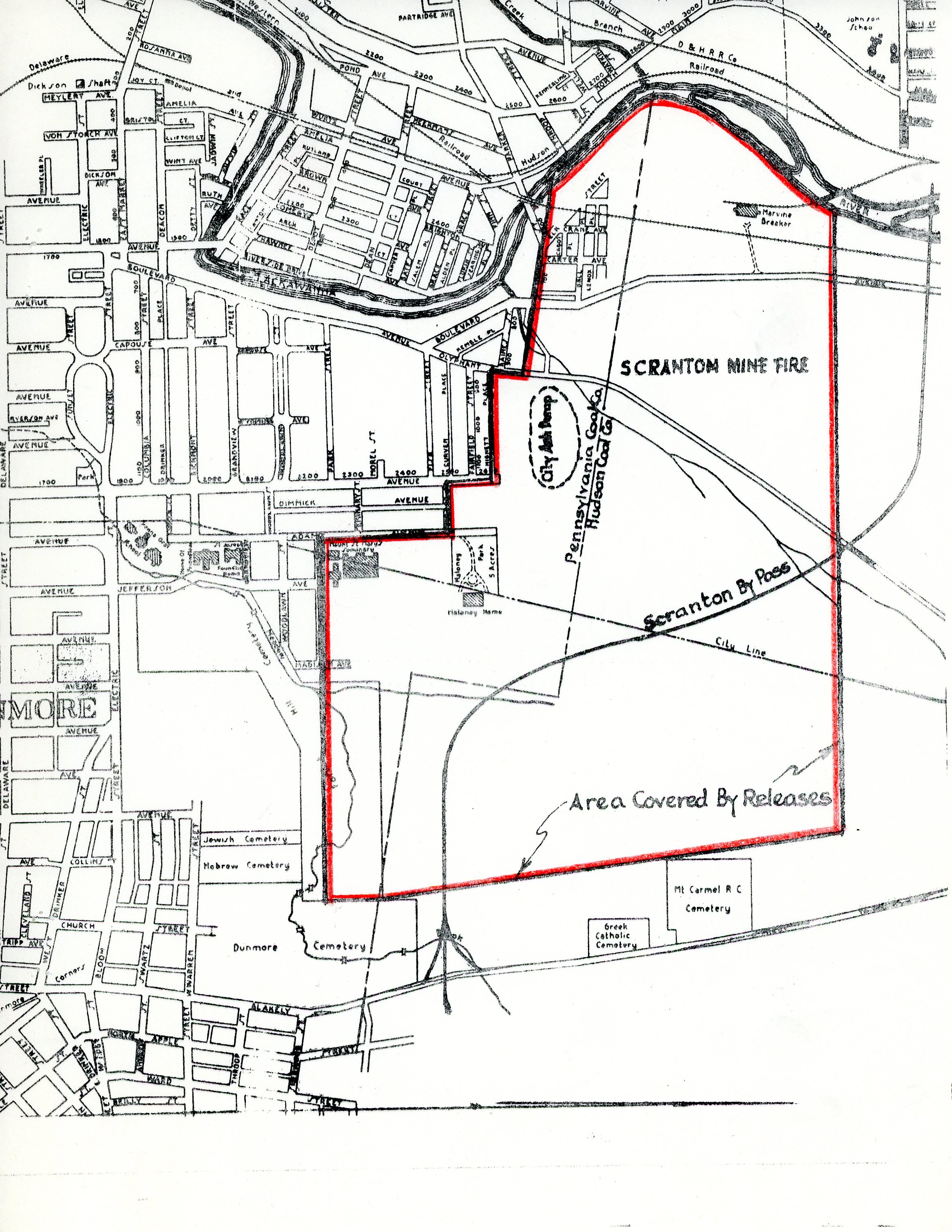Mining Fires at Marywood College

Published by: RoseDog Books
As Mother Josepha's spirit and the resultant "refurbishing" of the buildings and grounds was a source of pride to all, so her dismay and disappointment spread to all concerned when the extensiveness of damage to Marywood property from underground mining operations became known to her. For the seven years from 1932 through 1939 a series of letters from mining engineers to Bishop O'Reilly, copies of which were sent to Mother Josepha, reported on a regular basis the conditions underneath the Maloney Home (now Holy Family Residence), Nativity Church, Marywood College, and the motherhouse. These letters, especially during 1932, reflect an obvious desire on the part of the bishop and of his mining engineer, Mr. J. Rossa McCormick, to protect these properties from further encroachment by the coal companies. Safety supports were not being maintained and extensive "robbing of the coal pillars," which had been left as supports, was going on, either by so-called "bootleg" miners, or by the coal companies themselves. Efforts were aimed at obtaining legal agreements to require the coal companies to make restitution for damage done to surface buildings and grounds, as well as to require more careful mining practices in the future. (7)
It was during this period also that the newly paved asphalt roads buckled and began to show deep "pot holes" as a result of weakening of underground support. The tennis courts, too, were not usable because of similar problems. To further complicate matters, a cave hole about forty feet deep broke open beyond the cemetery on the college campus, revealing a mine fire that had been smoldering for some time. Fumes from the fire were invading the entire region, so there were complaints from the neighborhood and fear of the fire's spreading. As Mr. J. Rossa McCormick reported, "This fire had grown to such proportions that the citizens felt their lives were menaced by the fumes of the gases given off.” (8)
It seems that not only was the Pittston Coal Company partly responsible for the undermined conditions which caused the cave-in, but that many other parties also had been using this area for dumping rubbish, ashes, and all kinds of debris--the Dunmore Borough, area residents, and the Marywood maintenance crew themselves could all be faulted for the conditions which resulted in combustion and fire. All parties concerned were involved in the expense of extinguishing this fire by bulldozing and flushing.
In March 1933, Mother Josepha exacted a very strict, detailed agreement from Mr. Severin Sekol as he began borehole work for another client in the area behind the science building. Her concern for the projects he had already completed is apparent in her restriction of access over congregation land to "such places as shall be agreeable--and no other places (and particularly, the party of the first part shall not use the concrete drive on the said premises)." (9) She was also concerned about disruption of the college, as she specifies that the hauling of materials would not be done on Sunday, "and at no time shall materials be hauled thereto that would interfere with the peace and quiet of the proper conduct of the said college.'' (10)
Continually during the years from 1928-1932 both Mr. Severin W. Sekol and Mr. J. Rossa McCormick, mining engineers, had recommended extensive flushing projects be done beneath the Marywood property. Mother Casimir and Mother Mary William had both postponed these warnings because of the great cost. Since they were continuously engaged in small flushing projects on the property, they probably did not realize the extent of the problem. By 1937, agreements were being reached which involved the Borough of Dunmore, the City of Scranton, and representatives of the Hudson Coal, the Pennsylvania Coal, the Glen Alden, Green Ridge Coal, and the Pittston Coal Companies. These agreements required more careful mining in the future and reasonable repairs to be made by the coal companies to all lands and buildings damaged by mining operations. (1l) These agreements were finally completed by 1939. Mother Josepha's expression of gratitude has a bit of tongue-in-cheek humor as she writes to the president of the Pennsylvania Coal Company: “. . . Our gratitude to you, dear Mr. Connolly, for this protection is in proportion to the anxiety we experienced for many years from fear of mine caves . . . ” (12)
References:
7. Letters from Mining Engineers to Bishop O'Reilly, 1932-1937. Archives, IHM Generalate.
8. Letter from Mr. J. Rossa McCormick to Bishop O'Reilly, September 13, 1932. Archives, IHM Generalate.
9. Contract between Mr. Severin Sekol and Mother M. Josepha as President of Marywood College, March 13, 1933. Archives, IHM Generalate.
10. Ibid.
11. Letter from Cadwalloder Evans, Jr. of the Hudson Coal Company to Stanley J. Davis, Mayor, City of Scranton, August 13, 1937. Archives, IHM Generalate.
12. Letter from Mother M. Josepha to Mr. H. A. Connolly, Pennsylvania Coal Company, October 10, 1939. Archives, IHM Generalate.